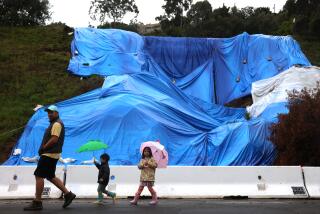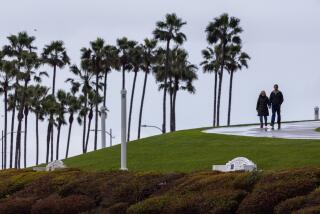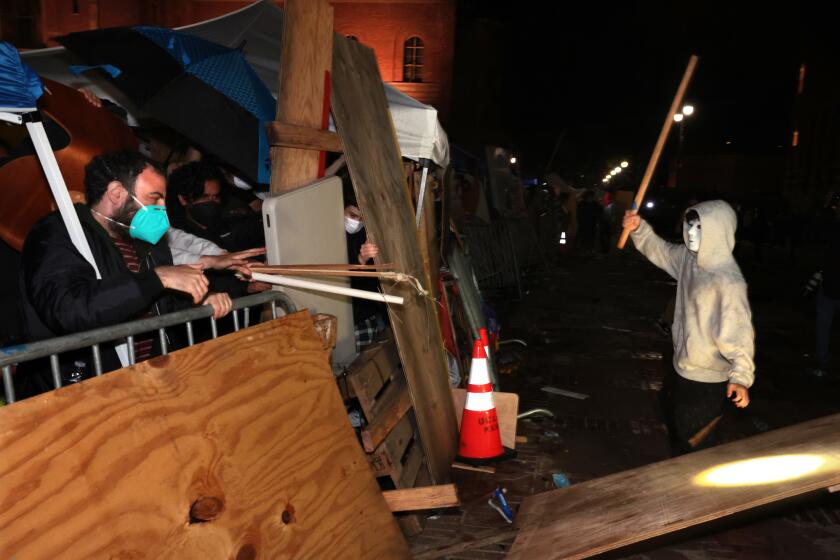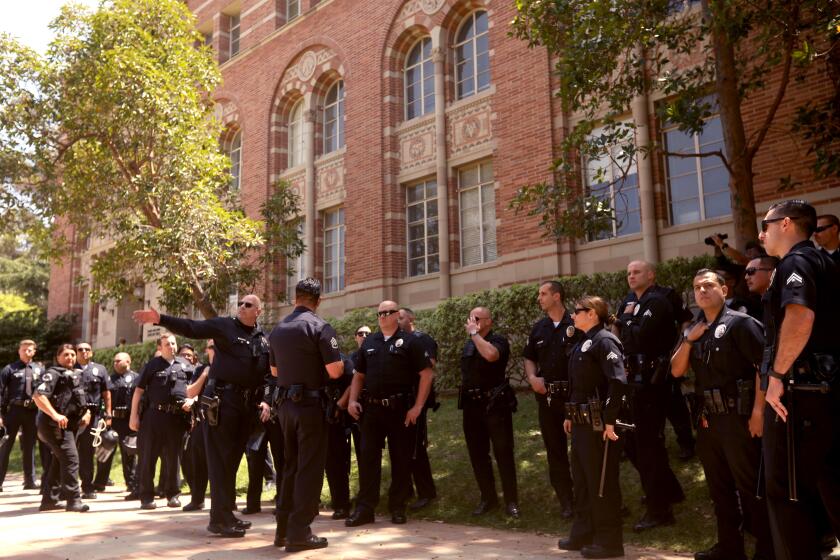More rain possible in L.A. County later this week after downpours hit area

Storms brewing over the Southland produced significant lightning, thunder and heavy downpours Monday, prompting meteorologists to issue a flood advisory in the early evening for the east central portion of Los Angeles county.
About 4 p.m., nearly stationary thunderstorms produced heavy downpours with estimated rainfall of up to 1 inch in an hour.
About three-quarters of an inch of rainfall was recorded near Pasadena, according to the National Weather Service in Oxnard. The Santa Anita Dam above Sierra Madre recorded almost two-thirds of an inch of rain in 30 minutes.
Drivers using the 210 Freeway and Interstate 5 for their Monday evening commute were cautioned to drive safely and watch for flooding.
Pea-sized hail was recorded in a few places in the region, including in Wrightwood, a mountain community along State Highway 2, in San Bernardino County.
The storm system skirted the Creek fire and La Tuna fire burn scars — two large wildfires that burned in 2017 — dumping most of the rainfall just outside of that area.
Monday’s rainfall could be only the beginning of precipitation this week.
The low-pressure system was expected to leave Monday evening, along with most of the showers, and Tuesday and Wednesday are expected to be dry.
But another low-pressure system may bring showers late in the week, before drying out on Sunday.
“We’re still looking at the possibility of another chance of showers Thursday through Saturday,” said Kathy Hoxsie, a meteorologist with the National Weather Service in Oxnard. “It’s going to be highly dependent on how the low pressure and the overall conditions develop, but that is a possibility.”
The spring showers come after an exceptionally wet winter thanks in part to a series of atmospheric rivers. By early March, downtown L.A. had received more rain in four months than it typically gets in a year. In mid-March, the state was 100% drought-free for the first time since 2011.
A wet winter also helped grow a heavy crop of lush grasses, and California could see an increase in fire activity by late May or early June.
Times staff writers Alejandra Reyes-Velarde, Javier Panzar and Hannah Fry contributed to this report.
More to Read
Start your day right
Sign up for Essential California for news, features and recommendations from the L.A. Times and beyond in your inbox six days a week.
You may occasionally receive promotional content from the Los Angeles Times.







